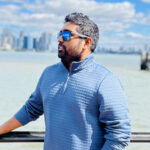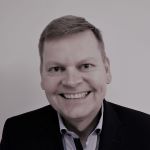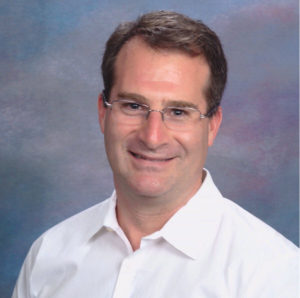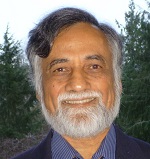 Kirby Simon, Science & Technology Lead
Kirby Simon, Science & Technology Lead
I studied Chemical Engineering (BS 2018) and Materials Science and Engineering (MS 2019) at Washington University in St. Louis and became interested in R&D when I began undergraduate research my sophomore year. My passion for technology development expanded during my thesis work, and soon after graduation I joined an early-stage startup company designing, building, and testing prototype sensors for planetary science, ocean, climate, and agriculture applications.
I have helped develop >10 different optical sensor prototypes and participated in field campaigns deploying and testing technologies in different environments, from a lava field in Iceland to a corn field in Iowa. My experience in sensor development has largely focused on various spectroscopy techniques, including Raman, fluorescence, luminescence, laser-induced breakdown spectroscopy (LIBS), and near-infrared (NIR) reflectance, however I also have experience with lidar and imaging technologies.
My research interests revolve around developing and testing in-situ, active optical sensing technologies that enable scientific advancement in the characterization of the ocean and other extreme environments. Specific interests include (1) measuring the physical, optical, and/or chemical properties of constituents in aqueous environments, (2) advancing technologies to monitor carbon cycling in the ocean and support measuring, reporting, and verification (MRV) efforts for marine carbon dioxide removal (mCDR), and (3) developing instrumentation to validate remote sensing measurements and climate models and support efforts to study and mitigate climate change.
 Ravi Chandrasiri, VP Engineering
Ravi Chandrasiri, VP Engineering
From a young age, I was captivated by the inner workings of technology and possessed an innate drive to bridge gaps and unravel complexities. Consequently, my unwavering passion led me to pursue a career solely in electronics engineering, a field that has always held my heart.
Having completed my Master of Engineering in Electrical Engineering, my academic journey was shaped by the guidance of esteemed professors and mentors and driven by my unquenchable desire for learning. This path has molded me into a seasoned electronics engineer. With more than ten years of professional experience, coupled with the distinction of co-authoring 16 awarded patents and several research publications, I am deeply proud of my contributions to the field.
Throughout my career, I have been deeply engaged in research and development, refining my skills and knowledge in various domains. IoT development, robotics, applied research, sensor integration, wireless protocols, and firmware are among these. Additionally, I possess a remarkable ability to conceive and execute pioneering commercial solutions, earning me a reputation as a versatile and imaginative problem-solver.
I am enthusiastic to bring my expertise and insights to the winning team at Sequoia. I am eager to collaborate with like-minded individuals in crafting groundbreaking products that will make a lasting and positive impact on the world.
 Ole Aarup Mikkelsen, President & CEO
Ole Aarup Mikkelsen, President & CEO
My initial life plan was to become a theoretical physicist, Stephen Hawking was an early idol. But in high school I had a phenomenal geography teacher, so that’s what I ended up studying in college instead. My Ph.D. thesis (2001) dealt with suspended particle dynamics in Danish coastal waters, and had lots of LISST results in it. One of Sequoia’s very first customers was my supervisor, Professor Morten Pejrup at University of Copenhagen, and to a large extent my life and career has been intertwined with Sequoia since he bought LISST-100 s/n 1019 from Sequoia in 1997. (That unit, btw, is still going strong today (2019), and despite decades of use it has only been back for service once in 22 years).
A series of early visits to Sequoia during my Ph.D. (1998-2001) and subsequent postdocs in Canada and the UK (2002-2007) led me to being hired by Sequoia and relocating to Seattle in November 2007. During my Ph.D. I used a LISST to study the dynamics sedimentology of suspended particles in Danish coastal waters, leading to some of the first papers on in-situ estimates of flocculation time scales, the influence of flocculation on remote sensing estimates of particle concentration, and a new settling velocity model. During my 2001 visit to Sequoia I started working on the randomly shape particle studies, which culminated in 2008 with the JGR publication of the randomly shaped particle matrices. Sequoia is still the only company in the world to have done this. During my post doc in Canada I developed the INSSECT sampling platform for studying dynamic sedimentology in coastal areas, deployed in a number of locations in Canada and the Adriatic Sea 2002-2005. My work on Schlieren, which can potentially affect all optical instruments, also was initiated during my Canadian postdoc, and finalized during my postdoc in the UK (2005-2007). Upon relocating to Seattle work continued on the randomly shaped particle topic, leading to a couple of papers in Applied Optics with published phase functions for randomly shaped particles.
I left Sequoia in 2013 but was brought back as President 1/1/2019 as Yogi retired.
 Thomas Leeuw, Senior Engineer
Thomas Leeuw, Senior Engineer
I received a bachelor’s degree in marine science (2012) and a master’s degree in oceanography (2014) from the University of Maine at Orono. During my time at UMaine I became particularly interested in optical oceanography. As a student of Emmanel Boss I operated, calibrated, cleaned, studied, modified, troubleshooted, and repaired a large variety of optical sensors. I learned the importance of understanding your instruments and to be skeptical of the numbers they put out!
Through collaborative projects and field work conducted around the world, I gained a wide breadth of experience with in-situ sensors, remote sensing, and satellite ocean color measurements. I have publications ranging from spectroscopy, satellite validation, novel sensors/methods, and absorption and scattering in the ocean.
In addition to oceanography, I also have an interest in computer science. The large datasets generated from multi-year sampling campaigns or satellite measurements necessitates the use of custom data processing. This is why I initially learned a few computer programming languages. Over the years this has rapidly expanded to writing programs for mobile devices, embedded systems, and desktop applications. Writing concise and maintainable code has become an unexpected passion.
My expertise in optical oceanography and software engineering allows me to support the full range of instrument development at Sequoia. Starting with the principles and theory of the measurement, all the way to delivering calibrated and usable data to the customer.
David R. Dana, VP, Engineering & Production – RETIRED 1st JULY 2023, see link below for details.
 Curtis Mobley, Emeritus Vice President and Senior Scientist – RETIRED FROM SEQUOIA 1/1/2019
Curtis Mobley, Emeritus Vice President and Senior Scientist – RETIRED FROM SEQUOIA 1/1/2019
Although my background is physics and meteorology, most of my career has been devoted to research in radiative transfer theory applied to problems in optical oceanography and ocean color radiometry. The widely-used HydroLight software, the textbooks Light and Water: Radiative Transfer in Natural Waters and The Oceanic Optics Book (DOI: 10.25607/OBP-1710), and the Ocean Optics Web Book (www.oceanopticsbook.info) are the best-known products of my efforts.
Early in my career, I was a Fulbright Fellow to Germany, and I have held both regular (at the NOAA Pacific Marine Environmental Lab) and senior (at the Jet Propulsion Lab) National Research Council Resident Research Associateships. I was an oceanographer with the University of Washington Joint Institute for the Study of the Atmosphere and Ocean during the 1980s. From 1989-1991, I was the Program Manager of the Ocean Optics program at the Office of Naval Research. I have also been an associate professor of physics at Pacific Lutheran University, an Affiliate Professor in the School of Oceanography at the University of Washington, and an External Faculty member of the School of Marine Sciences at the University of Maine. I was the 2012 Distinguished Alumnus for the School of Atmospheric and Oceanic Sciences at the University of Maryland. I received the 2016 Jerlov Award, in part for “applications of radiative transfer theory to problems in optical oceanography.” According to Google Scholar Citations, my papers and books have been cited over 16,000 times. I have an H index of 51 (51 papers cited 51 or more times), and 90 papers with ten or more citations. I was Vice President for Science and Senior Scientist at Sequoia from 1997 until I retired at the end of 2018.
Research Interests
Much of my early research at Sequoia sought to improve remote sensing of optically shallow water. That work involved the development and evaluation of spectrum-matching methods for retrieval of bathymetry, bottom classification, and water inherent optical properties from airborne hyperspectral imagery. More recent work was on improving ocean ecosystem models by improving their light calculations (the light both heats the water and drives photosynthesis). One result of that work is the extremely fast EcoLight-S(ubroutine) radiative transfer code, which is designed for use as the optical component of coupled physical-biological-optical ocean ecosystem models.
I also have a fondness for teaching, and I have taught many intensive week-long courses and summer classes (twice at the Univ. of Washington, 10 times at the Univ. of Maine, 3 times in France, twice in Brazil, 3 times in China, and also in Singapore, Sweden, and Korea). I enjoy figuring out something and then explaining it to others, so much of my time is now spend adding new material to the Ocean Optics Web Book.
Personal
Starting in graduate school, my wife, Ann Kruse, and I devoted all weekends and vacations to climbing — ice in New England in the winter, rock in California, mountaineering in Alaska, and everything in between. But after 20 years of playing on vertical terrain, all of the climbs started to feel the same. This serious mid-life crisis was resolved when we discovered sea kayaking. Our vacations now find us paddling in exotic locations around the world. Our kayaking expeditions have included Alaska, Greece, arctic Norway, eastern Greenland, Panama, Fiji, Belize, and even Antarctica. Next up is the Galapagos Islands in 2023. You can see photos from recent trips at our Smugmug site.
For almost 20 years I led trips for Wilderness Volunteers, a non-profit organization that does trail maintenance, habitat restoration, archaeological surveys, and similar work in National Parks, wilderness areas, wildlife refuges, and other public lands. I served on the Wilderness Volunteers Board of Directors for six years before “aging off” in 2021. For many years I also led white-water rafting and sea kayaking trips, and cultural trips in China, for the Sierra Club
I’m spending my retirement writing more books, sea kayaking, and developing a native plant garden at my home.
 Chuck Pottsmith, VP, Operations
Chuck Pottsmith, VP, Operations
All of my life I have been fascinated by what makes things work. My whole career as a mechanical engineer has just been an extension of the curiosity I had as a kid. I think I have the best job in the world…I get paid to invent, build, and make work a wide variety of interesting things.
I started my career as a fluid dynamics laboratory technician at Flow Research while going to school at the University of Washington. I learned many things about experimental science and fluid mechanics. In addition to learning the science I also learned the art of machining. My hours spent working with and talking to the “elders” of the machine shop taught me how to be a much better mechanical engineer.
In 1988 I met Dr. Yogi Agrawal. After graduating I started working with Yogi full time and I have been working with him ever since. We have built many unique instruments for our oceanographic research. Most, if not all, included some kind of optics and electronics. Some examples are Laser Doppler Velocimeters, Laser particle size analyzers, and underwater cameras. All of which were in-situ instruments that required close coupling of electronics, optics and mechanical components.
Yogi and I started Sequoia in early 1995 on the idea that we could build a better science and technology company. We wanted to work at a place that could do both high caliber contract science and manufacture state of the art research equipment. We feel that we have achieved that goal.
 Yogesh C. Agrawal, President (Emeritus) – Retired 2019
Yogesh C. Agrawal, President (Emeritus) – Retired 2019
Dr Yogesh (Yogi) Agrawal is the Founder and first President of Sequoia Scientific, Inc. He originates from India, having migrated to the US in 1969 and becoming a US citizen in 1988. Yogi’s career in the US started with a PhD in Fluid Mechanics at the University of California, Berkeley, reporting velocity structure in a curved circular pipe – motivated by plaque formation sites in the human aorta. At this time, he built his first laser Doppler velocimeter for the measurements.
After a brief post-doctoral stint in combustion research, he left for a change of career to Oceanograhpy in 1978. His first project was to develop laser Doppler velocimeters (LDV) to measure velocity structure in the lowest part of the deep seafloor, at 5,000m. Still later, the LDV was used for studies of the wave boundary layer on shallow seafloor. Subsequently, motivated by air-sea exchange process issues, he used the LDV in studies of turbulence in wind-forced, breaking surface waves at Lake Ontario. This work discovered enhancement of mixing and dissipation under breaking waves, opening a new area of study. While still continuing research in surface and bottom boundary layers, he won a US Navy competition to develop a laser diffraction particle size analyzer to quantify suspended sediment particles. This instrument he called LISST. It produced the first in-situ measurements of sediment particle size distributions (PSD’s) in shallow coastal and arctic seas.
In 1995, he formed Sequoia Scientific, Inc., with his engineer Chuck Pottsmith, with the LISST-100 as its first product. Over time, he went on to develop a range of LISST instruments for sediment studies in the sea and in surface waters (rivers, lakes etc). Variants of the LISST instrument were developed for studies of light scattering by particles – with relevance to marine optics. With NASA funding he went on to develop the first commercially successful optical volume scattering function sensor, LISST-VSF. In ensuing years, Dr. Wayne Slade joined Sequoia, further advancing optics technologies for remote sensing (now at Florida Atlantic University – Harbor Branch). In 2019 Dr. Agrawal retired, with former Vice President Dr. Ole Mikkelsen returning from his native Denmark to head Sequoia as its President. In a branch of his activities, Yogi co-developed with Ole the Particles in Europe (PiE) conference series. Subsequently, a similar group Particles in the Americas was developed jointly with Dr. Juan Restrepo of Colombia and other Latin American scientists.
In addition to his work at Sequoia, in 2000, Yogi co-founded with his wife Eva the NGO Vishal Himalaya Foundation which continues rural development projects in India.
Yogi lives with his wife, children and grandchildren in the Seattle area.